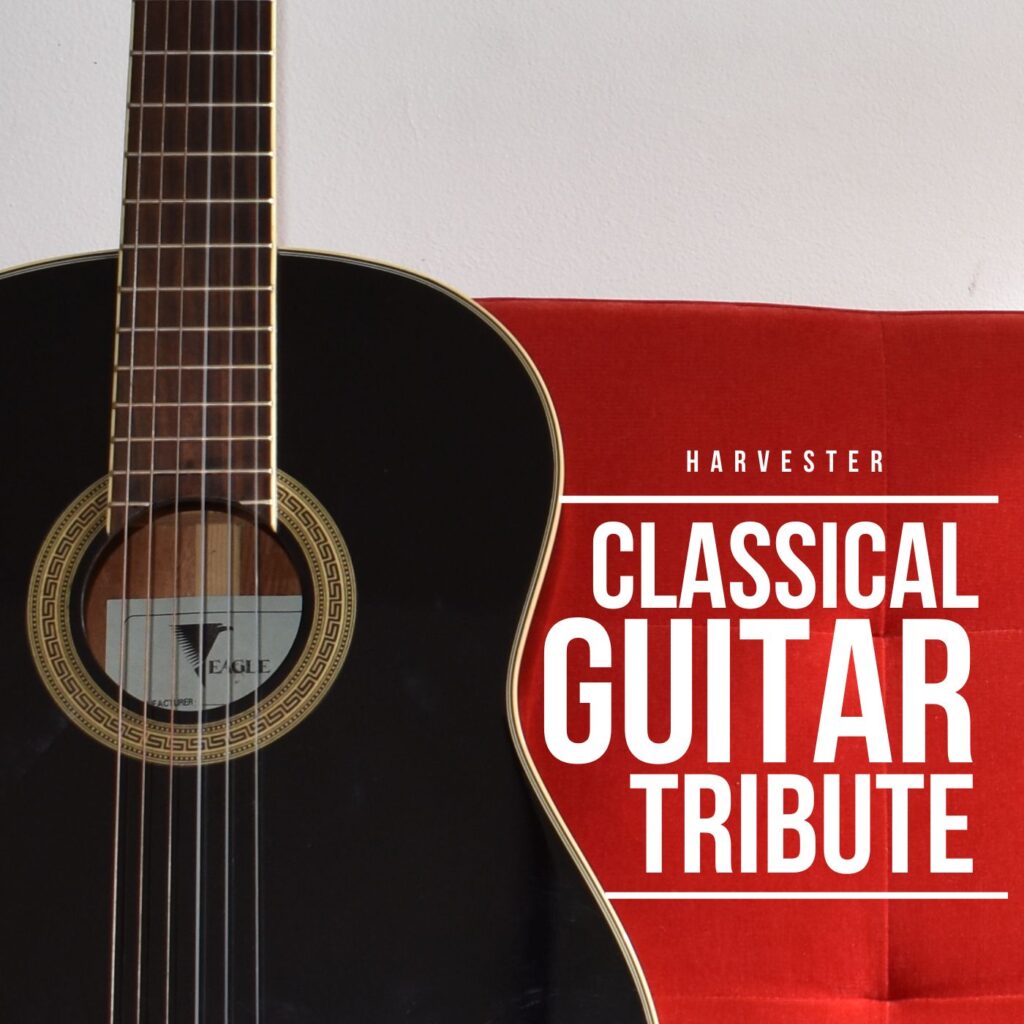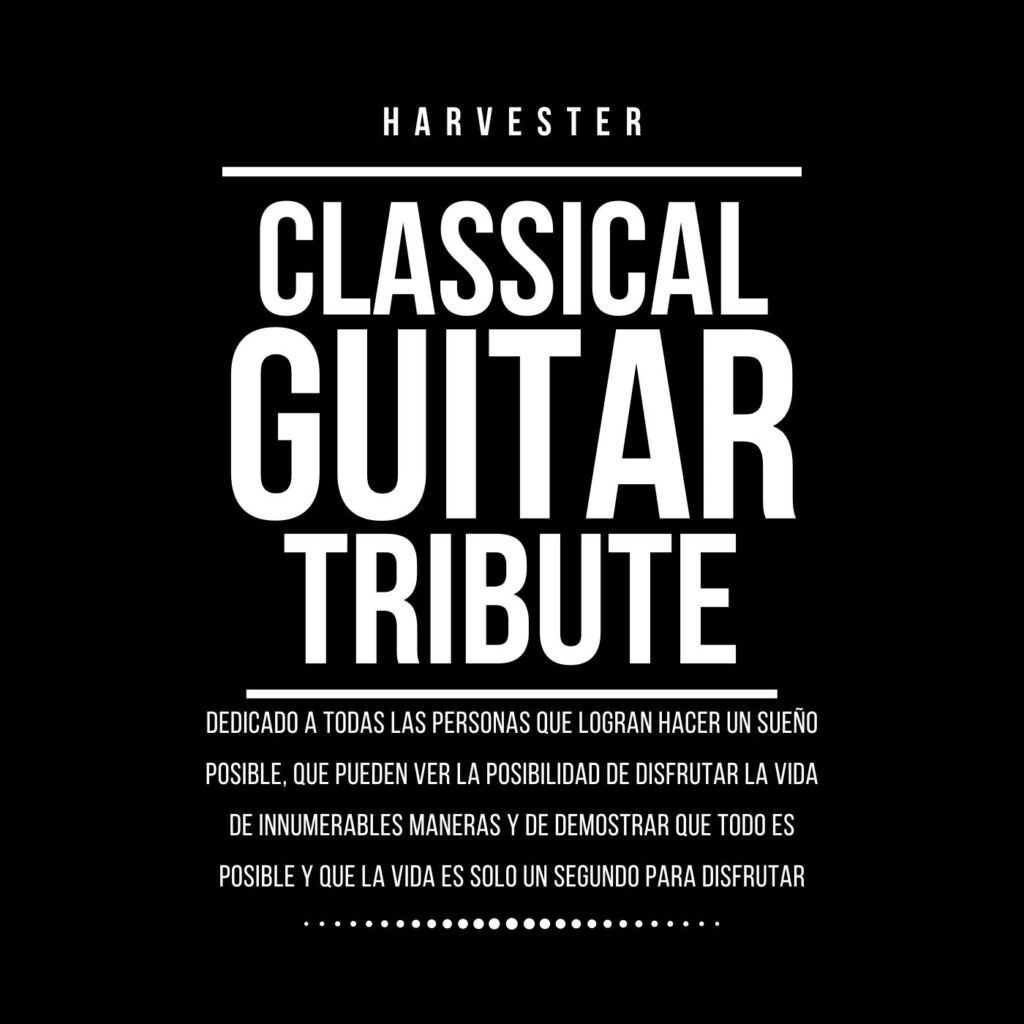
Rock Music
Como guitarrista principal de Haggen, he tenido el privilegio de ser parte de una de las bandas de rock más creativas y apasionadas que existen. Juntos, hemos creado música emocionante y dinámica, siempre buscando superar los límites y llevar nuestro sonido al siguiente nivel.
Nuestro álbum es un verdadero testimonio de nuestro amor por la música y nuestra dedicación a nuestro arte. Con sus riffs contundentes, melodías enérgicas y letras inolvidables, este álbum es una muestra de nuestra pasión por el heavy metal y nuestro compromiso de crear música que llegue al corazón y al alma de cada oyente.
One Life
Out of my mind
La canción habla sobre el deseo de libertad y la necesidad de soltar a alguien que está frenando. Las letras fomentan vivir la vida al máximo y ser fiel a uno mismo, incluso si eso significa ser odiado por lo que eres. El coro repetido de "sal de mi mente" enfatiza la necesidad de seguir adelante y dejar el pasado atrás.
Now I know
Como compositor y guitarrista de "Now I Know", esta canción tiene un lugar especial en mi corazón, ya que está dedicada a mi hija. A través de las letras, expreso mi amor por ella y el impacto que ha tenido en mi vida. Es un recordatorio de la alegría y la luz que ha traído a mi mundo, y los sacrificios que he hecho por ella. Cuando toco esta canción, me lleno de gratitud y amor por mi hija, sabiendo que sin importar hacia dónde nos lleve la vida, ella siempre será parte de mí.
Escafandra
Esta canción habla de una lucha entre la libertad y la cautividad, ya que el cantante se siente consumido y atrapado por un nuevo cuerpo y la protección de un traje de buceo. Se sugiere que el traje representa tanto una prisión física como mental, ya que cubre el cuerpo y evita que la mente escape. A pesar de esto, la canción es una poderosa reflexión sobre los desafíos del autodescubrimiento y el crecimiento personal.
Attitude
Esta canción inspira una actitud positiva hacia la vida, animando a los oyentes a enfocarse en sus metas y disfrutar de todo lo que les rodea. Enfatiza el poder de la individualidad y el empoderamiento personal, instando a los oyentes a ser fieles a sí mismos y esforzarse por una vida plena.


Guitarra Clásica
Mi pasión por la guitarra clásica me ha llevado a crear un álbum llamado "Homenaje a la Guitarra Clásica", que lleva a los oyentes en un viaje a través de la historia de la guitarra clásica con 11 canciones arregladas en orden cronológico de composición. Cada pieza refleja el estilo y la técnica únicos de su respectivo período de tiempo, mostrando la evolución de la guitarra clásica a lo largo de los siglos. La canción número 12 y final es una composición propia, un homenaje a la rica historia y artesanía de la guitarra clásica. Espero que este álbum inspire y profundice la apreciación por este hermoso instrumento y su rico legado.
Classical Guitar Tribute

Mientras mi guitarra llora suavemente
Cuando George Harrison decidió componer esta canción, encontró inspiración en el relativismo y el I-Ching, que sostiene que todo en la vida está relacionado. Mientras visitaba la casa de sus padres, decidió componer una canción utilizando las primeras palabras que vio al abrir un libro, encontrando "Gently Weeps" y el origen de una obra que logró estar entre las mejores de la historia.
Así es como cada obra, composición y expresión musical ve la luz, basada en una experiencia, un sentimiento, un momento iluminado. Pero sobre todo, surge de la iniciativa de tomar acción y capturar una sensación en notas que perdurarán en el tiempo y dejarán un mensaje para las generaciones futuras. Es algo que dice mucho más que palabras escritas en papel: es el alma capturada en una vibración musical.

Enrique VIII (1491 -1547)
1. Greensleeves (1525)
“Greensleeves” is a traditional English folk song and melody, mainly based on a motif called the “romanesca”. The widespread legend claims that it was composed by King Henry VIII of England (1491-1547) for his lover and future queen consort Anne Boleyn. Anne, who was the youngest daughter of Thomas Boleyn, the first Earl of Wiltshire, rejected Henry’s attempts to seduce her. This apparent rejection is referred to in the song when the author writes “cast me off discourteously”. It is not known if the legend is true, but the song is still commonly associated with the lady in public opinion.

Johan Phillip Krieger (1652 -1735)
2. Menuet in A Minor (1710 )
Johann Krieger (baptized on January 1, 1652, in Nuremberg; died on July 18, 1735, in Zittau, Saxony, eastern Germany), also known as Kruger, Krüger or Kriegher, was a German composer and organist.
Krieger was distinguished for the high level of his counterpoint, especially in his double fugues. Georg Friedrich Händel praised his collection of pieces for organ, Anmutige Clavierübungen (“Gracious Keyboard Exercises”), and promoted it in England. Krieger can be placed on par with his contemporaries Johann Kuhnau and Johann Caspar Ferdinand Fischer. Some of his German cantatas are rare examples of the late practice of the madrigal style in a composer of the Nuremberg school.

Santiago de Murcia (1673 – 1739)
3-4. Preludio/Allegro (1717 )
Santiago de Murcia was a Spanish guitarist and composer of the Baroque period. He was the son of Juan de Murcia and Magdalena Hernández, and his activity seems to have been concentrated in his hometown, where the most important patrons were located. He was born into a family with a long tradition of guitarists and viol-makers to the royal court, and his training was in the Royal Chapel, where his father Juan de Murcia and Francisco Guerau were masters.
Few details remain about the life of Santiago de Murcia. He may have been related to the luthiers Gabriel and Antonio de Murcia, but this has never been proven. Although he mentions the guitarist and composer Francisco Guerau in the introduction of his printed collection of music for guitar, there is no evidence that he actually studied with him.
In his collection of music for guitar, Resumen de acompañar la parte con la guitarra, printed in 1717, Murcia describes himself as the guitar teacher of Queen María Luisa de Saboya of Spain.

Johann Sebastian Bach (1685 – 1750)
5-6. Menuet in G / Menuet in G minor (1725)
Johann Sebastian Bach was the most important member of one of the most prominent families of musicians in history, with more than 35 famous composers. He had great fame as an organist and harpsichordist throughout Europe for his great technique and ability to improvise music on the keyboard. In addition to the organ and harpsichord, he played the violin and viola da gamba.
His prolific work is considered the pinnacle of Baroque music; it stands out for its intellectual depth, technical perfection, and artistic beauty, as well as for the synthesis of the various national styles of his time and the past. Bach is considered the last great master of the art of counterpoint and a source of inspiration and influence for later composers and musicians, from Wolfgang Amadeus Mozart, through Ludwig van Beethoven, Felix Mendelssohn, Robert Schumann, Franz Liszt, Johannes Brahms, Richard Wagner, Richard Strauss, and Gustav Mahler to more recent musicians such as Arnold Schönberg, Anton Webern, Paul Hindemith, Igor Stravinsky, Heitor Villa-Lobos, and Astor Piazzolla, among many others.

Ferdinando Carulli (1770 -1841)
7. Andantino in G – OP. 241 Nº5 (1825)
Ferdinando Carulli was an Italian composer and guitarist, considered one of the greatest teachers in guitar history. Many of his over four hundred pieces are used as methods for learning and perfecting techniques to handle this instrument.
He was born into an affluent family. Like many young people of the time, he learned music theory from an amateur musician priest, and his first instrument was the cello. But when he discovered the guitar at the age of 20, he abandoned the cello and devoted himself entirely to the guitar.
At that time, there were no authentic guitar teachers in Naples, which forced him to develop his own style and technique. Later, he himself published his method, which has remained to this day as a reference teaching material for the guitar.

Narciso Yepes (1927 – 1997)
8. Romance – Jeux interdits (1897 – 1901)
Narciso García Yepes was a Spanish musician known worldwide for his work as a classical Spanish guitarist. In 1947, he performed Joaquín Rodrigo’s Concierto de Aranjuez in public for the first time under the direction of Ataúlfo Argenta, which earned him immediate fame.
In 1952, according to his own statement, he rescued and reassembled a traditional guitar song: Romanza española (anonymous), a musical piece included in the movie Juegos prohibidos (Jeux Interdits, directed by René Clément, 1952).
The famous Romance Anónimo is one of the most rooted pieces in the guitar repertoire. There are few compositions that can be mastered by a beginner and remain in the repertoire and discography of great virtuosos. It is a simple and easy-to-play composition. However, its melody has captivated and continues to captivate audiences worldwide.

Louis Armstrong (1901 – 1971)
9. What a wonderful world (1967)
“What a Wonderful World” is a jazz song written by Bob Thiele and George David Weiss. It was first performed by Louis Armstrong and released as a single in early autumn of 1967. The song was intended to be an antidote to the political and racial climate of the 1960s and was written specifically for Louis Armstrong, who gave it its special appeal.
The song describes the singer’s delight in the simple things of everyday life and maintains an optimistic tone with hope for the future, including a reference to babies being born in the world who will have much to see and grow.
Initially, it was not a success in the United States, selling fewer than 1000 copies, but it was better received in the United Kingdom, eventually reaching number one in sales in 1968.

Randy Roads (1956 – 1982)
10. Dee (1987 )
Randall William “Randy” Rhoads was an American guitarist known for his work in the hard rock and heavy metal genres. He is known for his work with the band Quiet Riot in the late 1970s, and later with Ozzy Osbourne in the early 1980s. In 2003, Rolling Stone magazine ranked him 36th on their list of the 100 greatest guitarists of all time.
Rhoads played his last concert on Thursday, March 18, 1982 at the Knoxville Civic Coliseum. The next day, the band was heading to a festival in Orlando, Florida. Osbourne recalls his last conversation with Rhoads that night on the bus. They were talking about Ozzy’s excessive alcohol consumption. The last thing Rhoads said to him that night was, “If you keep going like this, you’ll end up killing yourself, you know? One of these days.” After driving most of the night, they stopped at a rest area equipped with an airport. Once there, Andrew Aycock, the band’s bus driver, decided to take Randy and a band makeup artist, Rachel Youngblood, for a ride in the airplane, as Andrew had an old, expired license for small planes. They flew over the band’s bus again and again, until one of the plane’s wings hit it. The wing collision caused the aircraft to veer into a house in the rest area, which caught fire and claimed the lives of all three occupants of the aircraft, including Randy.

Pink Floyd
11. Is there anybody out there? (1979)
“Is There Anybody Out There?” is a song by Pink Floyd, included in their thirteenth album, The Wall. It also appears in the film Pink Floyd – The Wall, based on the album. At the beginning, parts taken from the TV programs Gunsmoke and Gomer Pyle, U.S.M.C. can be heard. Around 40 seconds, Roger Waters’ voice is heard along with high-pitched screams and a chorus. Immediately after, David Gilmour’s nylon string guitar arpeggios begin.
David Jon Gilmour, born on March 6, 1946, in Cambridge, UK, is an influential British musician, composer, and multi-instrumentalist. In 2003, he was named Commander of the Order of the British Empire. In the latest list of the 100 greatest guitarists published by Rolling Stone, he is positioned in 14th place (between Albert King and Freddy King), and in the eighth position of the “100 greatest guitarists” list of Total Guitar magazine. In 2006, the American magazine Guitar World included three of his songs among “the 100 greatest solos of all time.”

Harvester
12. Air (2018)
A musician since childhood with a focus on classical guitar, they began learning at the age of 14 with a borrowed guitar on weekends, and although left-handed, they learned to play it right-handed. At the age of 19, they started formal music studies and continued to improve their technique on the instrument. While primarily practicing electric guitar, they have kept their dream alive as a hobby for a long time, often generating constant but unfinished ideas.
“Air” was composed as a guitar exercise, but it manages to create a moment of reflection in a breath of just one minute. The gentle guitar sounds and appreciating its vibrations evoke warmth, passion, and a mix of technique and reflective relaxation.

Harvester
Tribute
Dedicated to all the people who make a dream come true, who can see the possibility of enjoying life in countless ways and show that everything is possible, and that life is just a moment to enjoy.